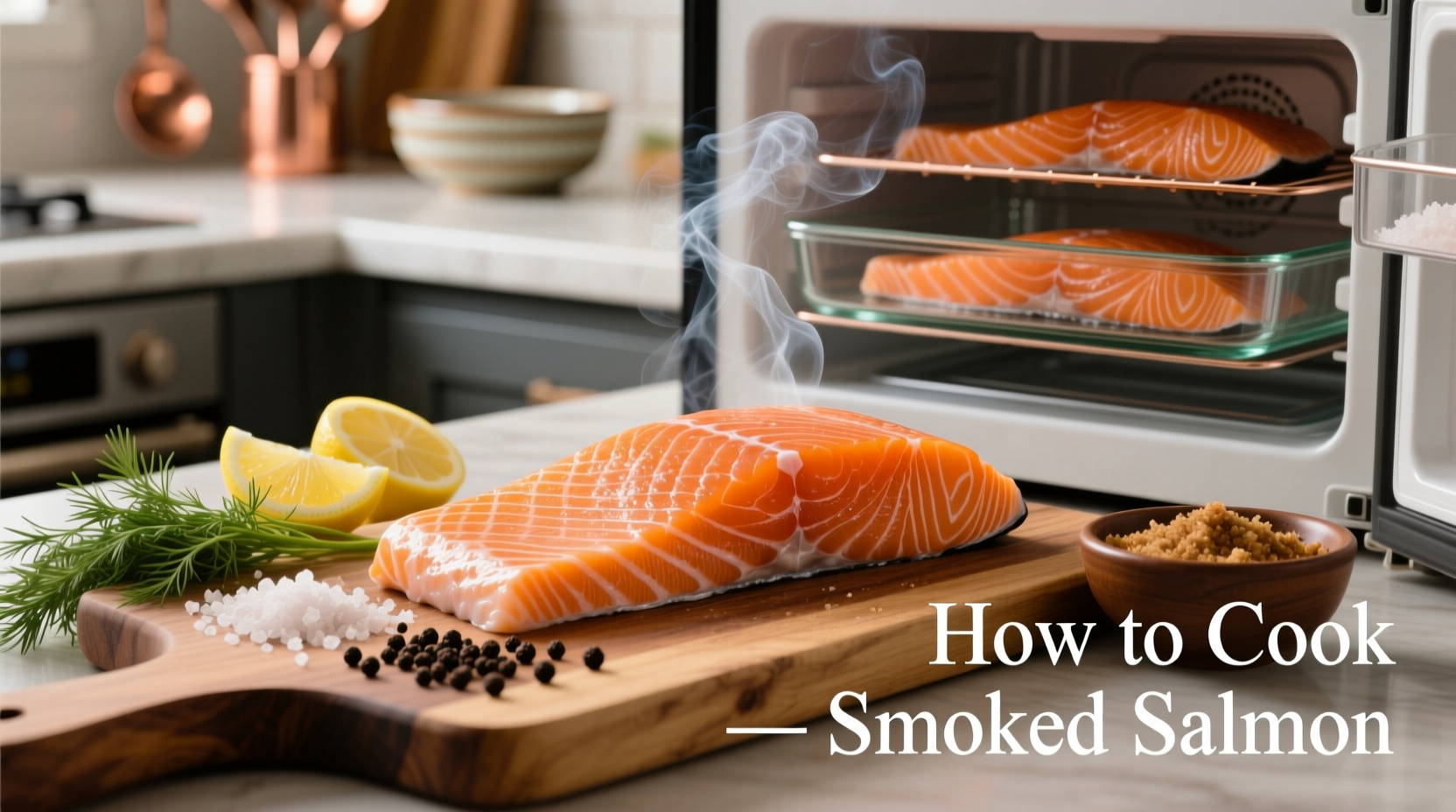When learning how to cook smoked salmon properly, remember: hot-smoked salmon is fully cooked and ready to eat as-is, while cold-smoked salmon should only be gently warmed or used cold in dishes. Never overcook smoked salmon as it becomes tough and loses its delicate texture. The ideal preparation depends on whether you're working with cold-smoked or hot-smoked varieties.
Smoked salmon brings a luxurious touch to any meal, but many home cooks make critical mistakes when preparing it. Understanding the difference between cold-smoked and hot-smoked varieties is essential for perfect results every time. This guide provides professional techniques backed by culinary science to help you serve smoked salmon that maintains its delicate texture and rich flavor.
Understanding Smoked Salmon Types: The Critical First Step
Before you start cooking smoked salmon, you must identify which type you have. This distinction determines your entire preparation approach and affects food safety.
| Characteristic | Cold-Smoked Salmon | Hot-Smoked Salmon |
|---|---|---|
| Smoking Temperature | 75-85°F (24-29°C) | 120-180°F (49-82°C) |
| Cooked Status | Raw (cured but not cooked) | Fully cooked |
| Texture | Soft, silky, almost raw-like | Firm, flaky, similar to cooked salmon |
| Preparation Approach | Best served cold or gently warmed | Can be reheated or used in hot dishes |
| Food Safety Consideration | Higher risk if immunocompromised | Safer for all populations |
According to the USDA Food Safety and Inspection Service, hot-smoked fish reaches temperatures that destroy harmful bacteria, making it fully cooked and safe to eat without additional preparation. Cold-smoked salmon remains in the "raw" category and requires special handling considerations.
Essential Preparation Before Cooking Smoked Salmon
Proper preparation ensures your smoked salmon maintains its premium quality. Follow these steps regardless of your cooking method:
- Temperature Check: Remove smoked salmon from refrigerator 10-15 minutes before use to take off the chill
- Pat Dry: Use paper towels to gently remove excess moisture (critical for proper searing)
- Slice Correctly: Cut against the grain at a 45-degree angle for optimal texture
- Salt Assessment: Taste a small piece first—most smoked salmon needs no additional salt
Professional Cooking Methods for Smoked Salmon
Pan-Frying Method for Hot-Smoked Salmon
This technique works best for hot-smoked salmon when you want to add a crisp exterior while maintaining moisture:
- Heat non-stick skillet over medium-low heat
- Add 1 teaspoon of neutral oil (avocado or grapeseed)
- Place salmon skin-side down (if applicable)
- Cook for 60-90 seconds until edges begin to crisp
- Flip carefully and cook 30 seconds more
- Remove immediately to prevent overcooking
Never use high heat—smoked salmon contains more oil than fresh salmon and will become tough if overheated. The FDA recommends keeping fish preparation temperatures moderate to preserve nutritional value.
Baking Method for Hot-Smoked Salmon Dishes
When incorporating hot-smoked salmon into baked dishes like quiches or casseroles:
- Add salmon during the last 5-7 minutes of baking
- Maintain oven temperature below 325°F (163°C)
- Cover with foil to prevent drying out
- Check internal temperature—should not exceed 125°F (52°C)

Using Cold-Smoked Salmon Properly
Cold-smoked salmon should generally not be cooked. Instead, use these professional techniques:
- Room Temperature Serving: Let sit 15 minutes before serving for optimal flavor release
- Gentle Warming: Place on warm bagel briefly—never direct heat
- Cold Applications: Ideal for salads, dips, and canapés where raw texture is desired
- Temperature Warning: Never heat above 100°F (38°C) to prevent texture degradation
Critical Mistakes to Avoid When Cooking Smoked Salmon
Even experienced cooks make these common errors that ruin smoked salmon's delicate qualities:
- Overcooking: Smoked salmon continues cooking off-heat—remove before reaching desired temperature
- Excessive Seasoning: The smoking process adds significant salt—taste before adding more
- Wrong Heat Level: High heat causes proteins to tighten and expel moisture rapidly
- Improper Storage: Once opened, consume within 2 days even if package date suggests longer
When Not to Cook Smoked Salmon: Context Boundaries
Understanding when cooking smoked salmon is inappropriate demonstrates true culinary expertise. Consider these context boundaries:
- High-Quality Cold-Smoked: Premium lox or Nova should always be served cold to preserve texture
- Food Safety Concerns: Immunocompromised individuals should only consume hot-smoked varieties
- Delicate Dishes: In sushi, salads, or canapés, cooking destroys the intended texture experience
- Brunch Presentation: Traditional bagel and cream cheese pairings require uncooked slices
The CDC advises that certain populations should avoid raw fish products entirely, making hot-smoked salmon the only appropriate option for these individuals.
Serving Suggestions for Perfect Results
Elevate your smoked salmon presentation with these professional pairing recommendations:
| Cooking Method | Ideal Pairings | Flavor Enhancers |
|---|---|---|
| Pan-fried hot-smoked | Asparagus, dill potatoes, lemon wedges | Capers, fresh dill, brown butter sauce |
| Gentle warmed | Whole grain toast, cucumber slices | Horseradish cream, chive oil |
| Raw cold-smoked | Bagels, blinis, crème fraîche | Red onion, fresh dill, lemon zest |
Storage Guidelines for Maximum Freshness
Proper storage maintains quality and ensures food safety:
- Keep unopened packages in coldest part of refrigerator (32-34°F/0-1°C)
- Once opened, store in airtight container with paper towel to absorb moisture
- Consume within 2 days for best quality and safety
- Never freeze smoked salmon—it destroys the delicate texture
Remember that smoked salmon continues to cure in the refrigerator. The flavor will intensify over time, which some prefer but others find too salty after several days.
Expert Tips for Culinary Success
Professional chefs use these advanced techniques to maximize smoked salmon's potential:
- Reserve the Oil: High-quality smoked salmon often comes with flavorful oil—use it in dressings
- Texture Contrast: Pair with crunchy elements like radish or cucumber for balanced mouthfeel
- Acid Balance: A touch of lemon or vinegar cuts through the richness perfectly
- Temperature Control: Warm plates slightly to prevent salmon from cooling too quickly











 浙公网安备
33010002000092号
浙公网安备
33010002000092号 浙B2-20120091-4
浙B2-20120091-4